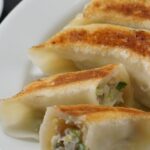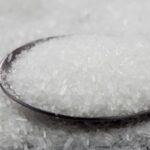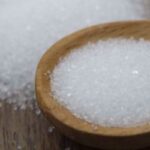
About one year and a half has passed since the Guidelines for use of “No Food Additive Used” labeling* of food additives was published. I would like to summarize again the outline of the guidelines and how to check the contents of the labels according to them.
* i.e. labels such as “No XX-used” (where XX is an additive etc.)
Outline of the guidelines
The guidelines are a summary of specific types of items concerning non-use labeling of food additives that should be taken into consideration so as not to mislead consumers. It does not uniformly prohibit non-use labeling of food additives. The guidelines can be used by food-related business operators to conduct self-inspection to determine whether or not their labels are subject to prohibited labeling items stipulated in Article 9 of the Food Labeling Standards.
The guidelines categorize non-use labeling for food additives into 10 types and summarize the points to be considered, along with specific examples.
Type 1: Mere “not added” labeling
Type 2: Labeling terms not stipulated in the Food Labeling Standards
Type 3: Labeling on foods with use of additives not permitted by the regulations
Type 4: Labeling on foods with food additives having same function / similar function
Type 5: Labeling on foods with ingredients having same function / similar function
Type 6: Labeling associating with health and safety
Type 7: Labeling associating with something other than health and safety
Type 8: Labeling on foods with use of additives not expected
Type 9: Labeling on foods with a processing aid or carry-over (or those that cannot be confirmed not to be used)
Type 10: Excessive claims
In addition, whether or not labeling of non-use of food additives falls under the prohibited labeling items (stipulated in Article 9 of the Food Labeling Standards) shall be judged as a whole on a case-by-case basis, considering the following points;
-based on the nature of the product
-knowledge level of general consumers
-actual situations of trade in products
-labeling methods
-contents subject to labeling
Practical checking method
It may be unclear for many people how to check non-use labeling for food additives in accordance with the guidelines. One example I recommend is that you divide the things to be checked into the following three points and proceed with the labeling review step by step.
- Does the label not fall under Type 3, 6, 7, 8, or 9?
- Does the label not fall under Type 1 and 2? If not, does it not also fall under Type 4 and 5?
- Is the label confirmed that it does not fall under Type 9, as well as Type 10 where its layout shall be considered as well?
Following the above steps will make it easier to review a label. I recommend that you consider this as one approach for the review.
Upcoming schedules
When you review the labeling, you will find that you need a lot of information about the ingredients used in the product. To continue using the “non-use” label for your product, you need to be careful about information management, especially with regards to a processing aid and carry-over.
We recommend that you take this opportunity to review the content of the guidelines, as it is required to promptly review the labeling using the guidelines by the end of March next year (2024). In addition, the educational leaflets and posters, and illustrations of the 10 types have been published, so check them together when you review the contents of the labeling.
Share/Like/Follow:
Newsletter Signup
We issue monthly e-newsletters, which provide you with the latest updates on food labeling/regulations in Japan.
If you want to make sure to not miss any issue, please click below.
Related Service
Research Services on Ingredients & Food Labeling -For the Japanese Market-
We verify the conformity of ingredients and additives with the standards for use in Japan based on specifications such as formulation lists. We also verify the conformity of the proposed labeling of ingredient names, nutrients, etc. with the labeling standards based on specifications such as formulation lists.

Label bank Co., Ltd. Regulatory Review and Development
Born in Japan. Specializing in nutrition, she is engaged mainly in research on ingredients and labeling drafts for food products to be exported from Japan to overseas, as well as in checking the consistency between Japanese and overseas nutrition labeling.






